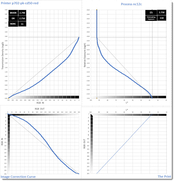jisner
Member
BTNS is a brand new way of calibrating digital negatives. If you go all the way back to Burkholder, "the father of the digital negative," you will find nothing like it. I found my inspiration for BTNS in the work of Phil Davis. In his 1981 classic Beyond the Zone System, Davis revolutionized silver gelatin darkroom printing by proposing the use of fundamental measurements from sensitometry (how emulsions respond to exposure) and densitometry (how film density controls exposure). Like BTZS, BTNS is based on fundamental measurements, but it has been updated for the hybrid digital/analog darkroom.
A complete BTNS calibration requires only one trip to the darkroom. Any other method, whether Photoshop-based or QTR-based, requires at least four trips. You can do a BTNS calibration in an afternoon. This low calibration overhead encourages experimentation.
Here is a link to Chapter 1 of my book "Calibrating Digital Negatives with BTNS." If you read the chapter and are interested in following up, let me know. I'm always looking for more beta testers, and I'll be happy to give a live demo to anyone who's simply interested in learning more.
A complete BTNS calibration requires only one trip to the darkroom. Any other method, whether Photoshop-based or QTR-based, requires at least four trips. You can do a BTNS calibration in an afternoon. This low calibration overhead encourages experimentation.
Here is a link to Chapter 1 of my book "Calibrating Digital Negatives with BTNS." If you read the chapter and are interested in following up, let me know. I'm always looking for more beta testers, and I'll be happy to give a live demo to anyone who's simply interested in learning more.
Last edited:








